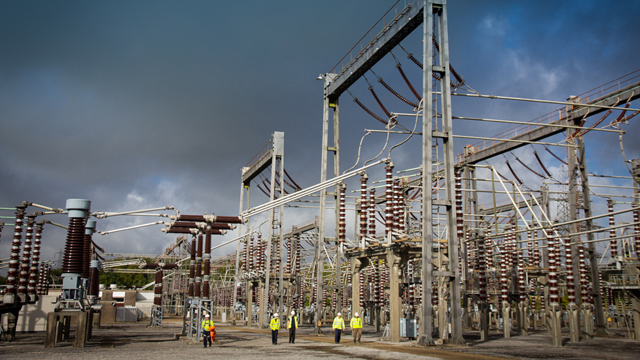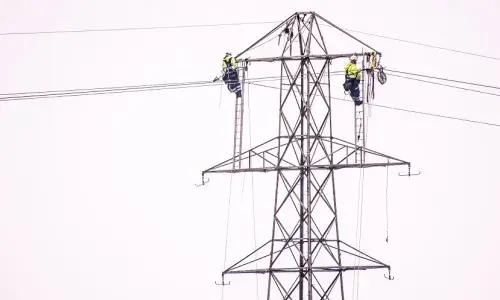
Substation expansion and creation
As the UK transitions to net zero, demand on the electricity transmission network continues to grow. Substations - critical hubs for connecting large-scale generation and demand, must evolve to meet this rising need.
In England and Wales, energy projects over 50 MW* typically connect to the transmission network via substations. These connections are made through designated “bays.” Large electricity users, such as data centres and factories, may also connect at a transmission level.
However, not all substations have spare capacity. If space and system conditions allow, substations can be extended to add new bays. National Grid Electricity Transmission (NGET) will construct the substation extension, while the customer is responsible for building their own bay.
What if a substation cannot be extended?
There are several reasons why substations cannot be extended, this can be due to:
Geographical constraints: Sites may be bordered by terrain, protected land, or infrastructure that prevents expansion.
Land Rights limitations: Expansion may require purchasing adjacent land, which isn’t always feasible. National Grid can exercise compulsory purchase powers under the Electricity Act; however, this is not always the most efficient option and can be refused in many cases.
Electrical capacity reached: Some substations are “electrically full” due to fault level limits. In such cases, upgrades or new builds may be required.
A new substation is considered only when existing options are exhausted, and we cannot resolve the reasons outlined above. Air-Insulated Switchgear (AIS) is NGET’s standard for new builds, but where space is limited or the site is in close proximity to the sea, Gas Insulated Switchgear (GIS) may be used. GIS substations are more compact but typically more expensive to construct.
Site selection and planning a new substation
Before a new substation location is confirmed, we carry out an options identification and site selection process. Once a preferred site is identified, our Electricity Transmission Land and Property team works to secure the necessary land rights.
Community consultation is a key part of the planning process. Local stakeholders are engaged early, and consulted during the planning process, providing an opportunity for the community to raise questions or concerns.
Environmental assessments are also conducted and monitored throughout the project lifecycle.
Please note: Offshore wind projects follow a different process via Holistic Network Design (HND), which considers both onshore and offshore network needs. Sites considered in this process were often agreed as part of the Crown Estate’s Offshore Wind Leasing Round 4 and Crown Estate Scotland’s ScotWind Leasing Round. Around 4 GW of floating wind is further assumed from the upcoming Celtic Sea leasing round and some additional projects that are due to connect.
Development Consent Orders (DCOs)
For new substations and other large-scale infrastructure, a Development Consent Order (DCO) may be required under the Planning Act 2008. A DCO is a statutory instrument that grants development consent and associated permissions for Nationally Significant Infrastructure Projects (NSIPs). It can also include powers for land acquisition and define the conditions under which the project must be constructed and operated.
From DCO application to Secretary of State decision, the entire process can take approximately 18 months. Find out more about how our NSIPs are approved (or rejected) in the UK.
Building a new substation
Once planning and land rights are secured, our Connections Engineers ensure all technical requirements are met for the safe construction and operation of the substation. This includes assessing local network capacity and coordinating with any ongoing network upgrade works.
Most construction activities can proceed without interrupting the live network. However, overhead line turn-ins, which enables the connection to the existing circuits, must be carefully coordinated with planned outages on the transmission system.
Customer responsibilities
Under the Customer Connection Agreement, it is the customer’s responsibility to secure all necessary consents and land rights for their user works, including any works on NGET-owned or controlled land. For further details, please refer to the guidance on the use of National Grid land.
As part of Connections Reform, NGET is investing strategically ahead of need, creating a “connection-ready” network that supports faster delivery and net zero goals. We always ensure that the chosen connection solution is the most economic and efficient option for both the customer and the wider network.
*The 50 MW figure applies across areas without any constraints. Generally, the limit depends on size, location, type of connection, and demand profiles.


